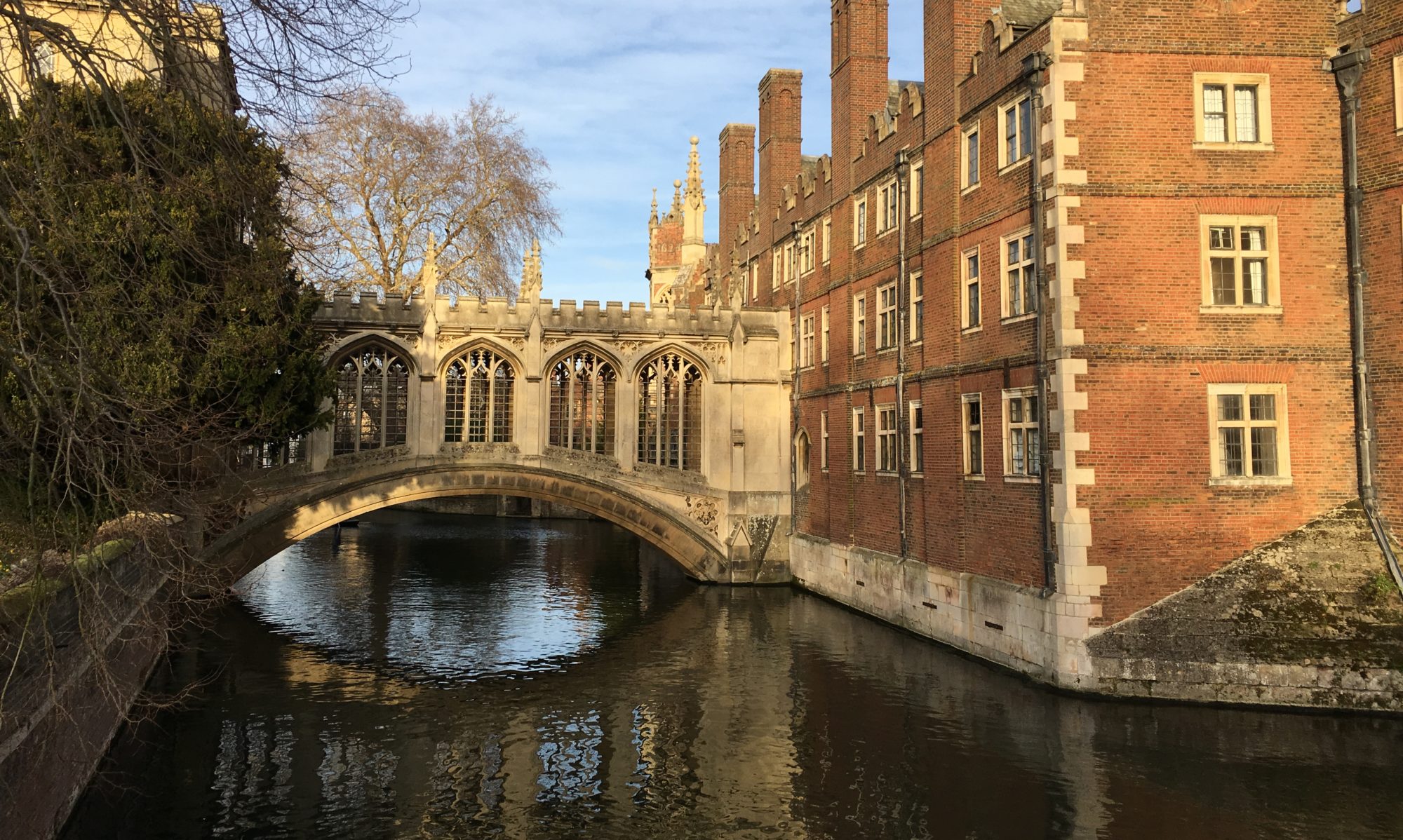The Cambridge University Botanic Garden should be by all rights one of my most frequented places as a plant lover. However, thanks to the pandemic and my skepticism about the weather’s suitability for going somewhere specifically to look at plants, I hadn’t set foot in the Cambridge University Botanic Garden in over a year, until last week when I finally took up the garden’s invitation to come stroll with a friend (only one allowed, per lockdown law). It was crystalline cold, but sunny, and we found some vivid highlights despite winter dormancy.

First, an overview of the garden. (Follow the links throughout for more lovely views and info about the gardens!)
Six ways to describe the Cambridge University Botanic Garden:
1. A large patch of the city’s quilt of green space (bird’s eye view); a particularly long greened-up fence (street view).
2. A lovely place for a stroll—free for members of the University, a few pounds for the general public—along winding paths through the expected trees and flowerbeds.
3. A place to learn about plants: all the beds and trunks are labeled with scientific names; interpretive signs tell stories; glasshouses (outside of national lockdown) take you through tropical and desert biomes; and in one section the beds are arranged by plant family (which makes my nerd heart sing. There will be another post on this someday).
4. A working contingent of the Department of Plant Sciences, holding not only the living botanical collections but also the Cambridge University Herbarium, an archive of thousands of dried plant specimens (including some collected and pressed by Charles Darwin and his mentor John Henslow; there will also be another post on this), housed in the shiny new Sainsbury Laboratory for plant developmental biology.
5. Pre-pandemic, a community gathering place—summer concert series and festivals such as the annual Apple Day (where people taste apples, buy apple products, drink beer, and trample the lawn).
6. During the pandemic, a bastion of quiet “exercise and well-being”—we’re still open, they like to remind us; come and walk. Provided you meet with only one other person outside of your household.

Six highlights of the Cambridge University Botanic Garden in winter:
1. Snowdrops. These bright clusters of pendulous white dollops, cheering in their crispness and roundness, are the glory of late winter/early spring gardens in England. They’re prized for their many hybrid cultivars, although in the sparkling array along the entry paths to the garden I only saw two varieties labelled, Galanthus ‘Magnet’ and Galanthus ‘S. Arnott’. Some flowers were still closely cupped and bulbous, dangling from delicate stems like someone’s chic twinkle lights; others splayed open their outer petals like three floppy rabbit ears, revealing the charming, green-painted inner petals. I deluged my friend with plant trivia, including the fact that snowdrops are in the group of plants called monocots—like grasses, corn, and daffodils (which are in the same family as snowdrops), all with the parallel-veined leaves that contrast the web-veined leaves of dicots (most other plants).
2. The New Zealand terrace garden: one of the first spots in the garden I ever visited, to reconnoiter the lovely hebes (Veronica) for my PhD project, and one I’m sure to show people every time. The hebes, four or five species in this garden, are evergreen, their striking bunches of symmetrical foliage tucked among the tussock grasses, cabbage trees, flax, and cut-back perennials. Also on display were several shrubs with those New Zealand-endemic, crazy-angled divaricate branches (another piece of trivia for my friend), frothing with energy.
3. The frozen fountain: in the deep shadow of pines blocking the southern aspect of the sun, the garden’s central fountain had the thickest ice I’ve seen in Cambridge, a solid crystalline centimeter floating on the top and in shards on the ground where children marveled over it at some point. We marveled too.
4. The fox: I’ve been sending wishes to the garden fairies for months for an encounter with the Newnham foxes, and have yet to see them—but we got to meet the Botanic Garden fox, slinking across the grass, long and narrow, swarthy black-trimmed auburn, trailing his robust tail. I wasted time trying to operate my phone camera in my clumsy touch-screen gloves instead of just taking him in. Incidentally, encountering stunning wildlife while trying and failing to get my phone camera to work is a recurring dream of mine, and, it turns out, is hardly distinguishable from reality.

5. The birds, especially the loquacious robins: one sang for us on a branch at eye-level, rolling his song delicately in his throat without cracking open his bill until he finally decided to broadcast, multiplying the sound by ten. There were also magpies, jackdaws, wood pigeons, blackbirds, and an exciting rattly call from a spotted bird I had never seen before: a mistle thrush. One for my life list!
6. Finally, after wandering a while, we found the Winter Garden: an exquisitely designed feast for eyes now accustomed to empty branches, scraggly sleeping flowerbeds (the ones without snowdrops to tide them over), and longsuffering green of hedges and conifers. Here are flowering daphne shrubs sending us—and a wakeful bee—their celebratory scent; dogwoods and willows bred for their fiery bark; densely landscaped tussock grasses; artistically peeling paperbark maple and curling contorted birch branches; quaint dry coneflower and sunflower heads poking above the evergreen shrubs; bright yellow winter aconite. And everywhere, snowdrops.























We enjoyed the tour of your garden walk. I like the curly branched birch(?). I am now seriously thinking of getting snowdrops for our yard. We’ve seen them in catalogs. I’m not sure why we don’t have them yet. Maybe deer eat them. We have learned not to plant things that deer snack on. Thanks!